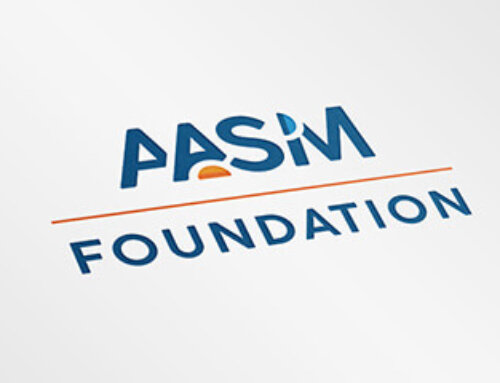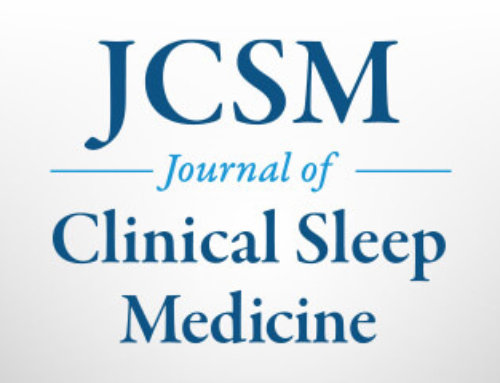WESTCHESTER, Ill.– Hospital staff nurses who work extended hours, work at night, struggle to remain awake at work, or obtain less sleep are more likely to experience a drowsy driving episode, according to a study published in the December 1 issue of the journal SLEEP.
The study, authored by Linda D. Scott, PhD, of Grand Valley State University in Grand Rapids, Mich., focused on data that were collected from 895 full-time hospital staff nurses, who completed logbooks on a daily basis for four weeks providing information concerning work hours, sleep duration, drowsy and sleep episodes at work, and drowsy driving occurrences.
According to the results, almost 67 percent of the nurses reported at least one episode of drowsy driving, and three percent reported experiencing drowsy driving following every shift worked. On average, nurses reported experiencing an episode of drowsy driving one out of every four shifts they worked.
Two-hundred eighty-one episodes of motor vehicle crashes/near-motor vehicle crashes were reported during the study period. The majority of these incidents occurred following shifts that exceeded 12.5 hours in duration. The likelihood of a motor vehicle crash/near-motor vehicle crash significantly increased with longer shift durations. The risk for a motor vehicle crash/near-motor vehicle crash almost doubled when driving following shifts that exceeded 12.5 hours.
The risk for a drowsy driving episode doubled when nurses worked 12.5 or more consecutive hours. Working at night also significantly increased the risk for drowsy driving incident. In fact, 79.5 percent of the nurses who worked only night shifts reported at least one episode of drowsy driving.
Almost two-thirds of the nurses reported struggling to stay awake at work at least once during the study period, and 16.9 percent of the nurses actually fell asleep at least one during their work shift. Nurses who struggled to stay awake at work were significantly more likely to report struggling to stay awake driving home after work. In particular, the likelihood of a drowsy driving incident was tripled when nurses experienced episodes of drowsiness at work. The risk for a drowsy driving episode was also increased when nurses reported falling asleep on duty.
Although research on the effects of chronic sleep restriction has revealed that most adults require at least seven to eight hours of sleep each night to avoid developing chronic sleep debt with its accompanying performance deficits, the hospital staff nurses in this study frequently obtained less sleep than this critical threshold. Only 20.8 percent of the participants reported obtaining at least six hours of sleep prior to every shift they worked. The risk for a drowsy driving episode increased by nine percent for each hour of sleep lost.
“Given the large number of nurses who reported struggling to stay awake when driving home from work and the frequency with which nurses reported drowsy driving, greater attention should be paid to increasing nurse awareness of the risks and to implementing strategies to prevent drowsy driving episodes to ensure public safety,” said Dr. Scott. “Without mitigation, fatigued nurses will continue to put the public and themselves at risk.”
Drowsy driving, the dangerous combination of sleepiness and driving, or driving while fatigued, while operating a motor vehicle, is becoming a growing problem in the United States.
In a sense, drowsy driving can be comparable to driving under the influence, as sleepiness results in a slower reaction time, decreased awareness, impaired judgment and an increased risk of getting involved in an accident, resulting in unnecessary deaths or injuries to innocent people. Nearly nine out of every ten police officers responding to an AAA Foundation for Traffic Safety Internet survey reported they had stopped a driver who they believed was drunk, but turned out to be drowsy. The survey was coordinated with the National Highway Traffic Safety Administration (NHTSA).
Drowsy driving can be prevented by becoming educated on the importance of sleep and the risks involved with taking the wheel while feeling fatigued.
There are two main causes of drowsy driving:
- Sleep restriction
Persons getting less than the recommended seven-to-eight hours of sleep each night are more likely to feel tired the following day, which can ultimately affect their cognizance behind the wheel. Not getting enough sleep on a consistent basis can create “sleep debt” and lead to chronic sleepiness over time. While some factors, including working at a job that requires long hours and familial responsibilities, are beyond a person’s control, other reasons for sleep restriction represent a lifestyle choice. This includes sleeping less to have more time to work, study, socialize or participate in other activities.
- Sleep fragmentation
Sleep fragmentation causes an inadequate amount of sleep and can negatively affect a person’s functioning during the daytime. Sleep fragmentation can have internal and external causes. The primary internal cause is sickness, including untreated sleep disorders. External factors that can prevent a person’s ability to have a full, refreshing night of sleep include noise, children, bright lights and a restless bed partner.
Drowsy driving is the direct cause of approximately 100,000 police-reported crashes annually, resulting in an estimated 1,550 deaths, 71,000 injuries and $12.5 billion in monetary losses, according to the NHTSA.
On average, most adults need seven to eight hours of sleep each night to feel alert and well-rested.
According to the American Academy of Sleep Medicine (AASM), people can avoid becoming drowsy while driving by following these tips:
- Get enough sleep
AASM recommends that adults get seven-to-eight hours of sleep each night in order to maintain good health and optimum performance.
- Take breaks while driving
If you become drowsy while driving, pull off to a rest area and take a short nap, preferably 15-20 minutes in length.
- Consume caffeine
Caffeine improves alertness in people who are fatigued.
- Do not drink alcohol
Alcohol can further impair a person’s ability to stay awake and make good decisions. Taking the wheel after having just one glass of alcohol can affect your level of fatigue while driving.
- Do not drive late at night
Avoid driving after midnight, which is a natural period of sleepiness.
SLEEP is the official journal of the Associated Professional Sleep Societies, LLC, a joint venture of the AASM and the Sleep Research Society.
More information about shift work is available from the AASM at: https://www.SleepEducation.com/Disorder.aspx?id=12 and at https://www.SleepEducation.com/Topic.aspx?id=54.
SleepEducation.com, a patient education Web site created by the AASM, provides information about various sleep disorders, the forms of treatment available, recent news on the topic of sleep, sleep studies that have been conducted and a listing of sleep facilities.
For a copy of this article, entitled, “The Relationship Between Nurse Work Schedules, Sleep Duration and Drowsy Driving,” or to arrange an interview with an AASM spokesperson regarding this study, please contact Jim Arcuri, public relations coordinator, at (708) 492-0930, ext. 9317, or jarcuri@aasm.org.
# # #




